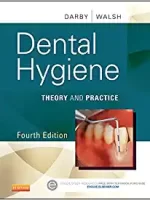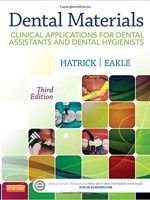Dental radiography plays a crucial role in dental care by providing valuable insights into the oral health of patients. One of the authoritative resources for understanding the principles and techniques of dental radiography is the “Dental Radiography Principles and Techniques 5th Edition” by Joen Iannucci. This comprehensive Test Bank offers multiple choice questions and answers to help students assess their knowledge and prepare for exams effectively.
**ISBN:** 0323297420, **ISBN-13:** 978-0323297424
**Chapter 01: Radiation History**
1. **Radiation Definition:** Radiation is defined as a form of energy carried by waves or streams of particles. X-rays have the power to penetrate substances and record image shadows on a receptor, making them essential in medical imaging.
2. **Radiograph Definition:** A radiograph is a picture on film produced by the passage of x-rays through an object or body. Radiography involves the art and science of creating dental images using x-rays.
3. **Importance of Dental Images:** Dental images play a crucial role in comprehensive patient care as they help in identifying dental diseases that may not have visible clinical signs. They are an indispensable component of patient diagnosis and treatment planning.
4. **X-ray Discovery:** The x-ray was discovered by Wilhelm Roentgen in 1895. This groundbreaking discovery revolutionized the field of medicine and diagnostic imaging.
5. **Dental Radiography Pioneers:** Edmund Kells exposed the first dental radiograph in the United States using a live person, highlighting the pioneering efforts in dental radiography.
6. **Technological Advancements:** Current fast radiographic films require 98% less exposure time compared to the early 1920s, showcasing the significant technological advancements in dental radiography over the years.
7. **Evolution of Techniques:** F. Gordon Fitzgerald introduced the long-cone technique, modifying the paralleling technique and contributing to the evolution of dental radiography techniques.
##### Frequently Asked Questions (FAQs)
**1. Why are dental images important in patient care?**
Dental images are crucial as they help in detecting dental diseases that may not show clinical signs, aiding in comprehensive patient care.
**2. Who discovered the x-ray?**
The x-ray was discovered by Wilhelm Roentgen in 1895, marking a significant milestone in medical imaging.
**3. What is a radiograph?**
A radiograph is a picture on film created by the passage of x-rays through an object or body, essential in diagnostic imaging.
**4. What advancements have been made in dental radiography technology?**
Current radiographic films require significantly less exposure time than in the past, showcasing technological advancements in the field.
**5. What is the significance of the long-cone technique in dental radiography?**
The long-cone technique, introduced by F. Gordon Fitzgerald, has contributed to improving imaging accuracy and diagnostic quality.
**Conclusion**
Understanding the principles and techniques of dental radiography is essential for dental students and professionals to provide optimal patient care. The “Dental Radiography Principles and Techniques 5th Edition Test Bank” serves as a valuable resource for assessing knowledge and mastering the fundamentals of dental imaging. Stay updated on the latest advancements in dental radiography to deliver superior dental healthcare services to patients.In the field of dentistry, the use of dental imaging techniques plays a crucial role in diagnosing and evaluating oral health conditions. One of the fundamental techniques used in dental radiography is the long-cone technique, which has been widely adopted for its effectiveness in capturing detailed images. Howard Riley Raper made modifications to the bisecting technique and introduced the bite-wing technique in 1925, further advancing the field of dental radiography.
Digital imaging has brought significant advantages to the field of dentistry, including a reduction in patient radiation exposure. Digital sensors used in dental imaging are more sensitive to x-rays than traditional film, allowing for clearer and more accurate images to be produced. Additionally, digital imaging offers increased speed for viewing images as they can be uploaded directly to a computer or monitor, eliminating the need for chemical processing and enabling immediate interpretation and evaluation.
The discovery of x-rays was preceded by Wilhelm Roentgen’s experiments with cathode rays, leading to the groundbreaking discovery of this form of electromagnetic radiation. Unlike beta particles, alpha particles, or radioactive materials, cathode rays played a critical role in the development of x-ray technology, revolutionizing the field of healthcare and diagnostics.
When it comes to taking dental x-rays, utilizing the appropriate equipment is essential. An image receptor, such as a film, phosphor plate, or digital sensor, is placed in the patient’s mouth to record the image produced by x-rays. This ensures that clear and accurate images of the patient’s oral structures can be obtained for diagnostic purposes.
Test Banks offer valuable resources for dental professionals and students looking to enhance their understanding of various topics in the field of dentistry. Whether it is learning about local anesthesia or dental embryology, histology, and anatomy, Test Banks provide comprehensive study materials to aid in exam preparation and knowledge acquisition.
FAQs:
Q: What are the advantages of digital imaging in dental radiography?
A: Digital imaging offers reduced patient radiation exposure, increased speed for viewing images, and immediate interpretation and evaluation without the need for chemical processing.
Q: What is the significance of the long-cone technique in dental radiography?
A: The long-cone technique is widely used for its effectiveness in capturing detailed dental images, contributing to accurate diagnosis and treatment planning.
Q: How do image receptors differ from dental radiographs in dental imaging?
A: Image receptors, such as films or digital sensors, are recording mediums placed in the patient’s mouth to capture x-ray images, while dental radiographs refer to the actual images produced on these recording media.
In conclusion, advancements in dental imaging techniques, such as digital radiography and the long-cone technique, have revolutionized the field of dentistry by providing clear, accurate, and detailed images for diagnostic and treatment purposes. Understanding the history and significance of these techniques is essential for dental professionals seeking to deliver high-quality care to their patients.










Be the first to review “Dental Radiography Principles and Techniques 5th Edition By Joen Iannucci-Test Bank”